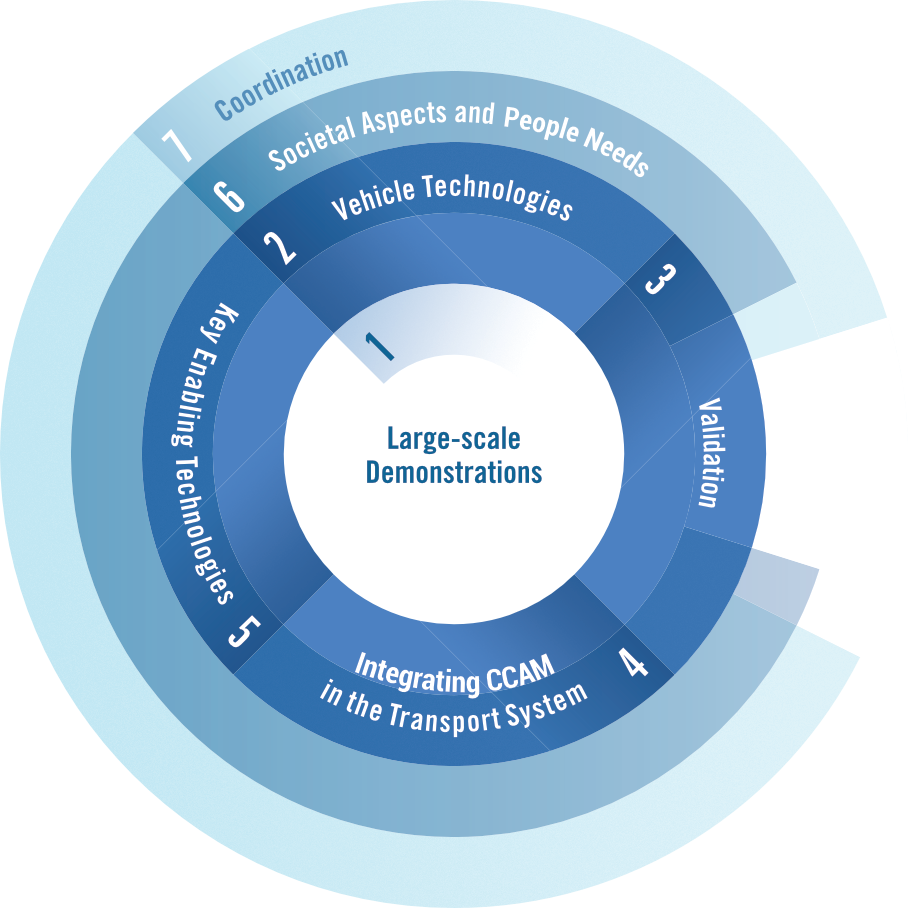
The 7 Clusters structure the activities of the CCAM Partnership, organising the necessary R&I actions to advance towards deployment readiness while aligning perspectives from road users/consumers, public policymakers, road operators, and industry
The Clusters are interlinked and provide input to other Clusters.
How it works together?
All Clusters together form a comprehensive framework for delivering the expected impacts and achieving the Partnerships’ Objectives.
- The starting point is the understanding of the user needs and societal aspects of mobility (6), advancing technologies (2, 4, 5) and demonstrating the maturity at a large scale (1, 3).
- Key enabling technologies (5) are needed to enhance solutions. These will be implemented together with future vehicle technologies for sensing, sensor fusion and enhanced safety systems (2). The overall transport system integration complements safe human-machine interaction to understand the requirements and needs for traffic and fleet management and provide physical and digital infrastructure support (4).
- Before demonstrating at a large scale (1), safe and resilient system functioning needs to be validated (3). All activities are linked through coordination (7) of all relevant stakeholders, ensuring alignment, interoperability and accelerating innovation uptake.